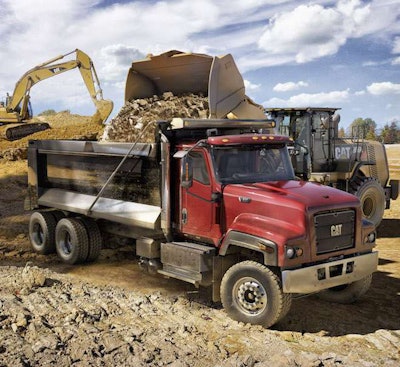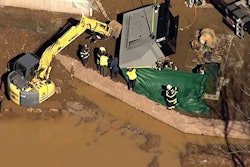
 A Cat CT681 in a dump configuration.
A Cat CT681 in a dump configuration.Less than a year after announcing plans to more fully commit to the business by building its own trucks, Caterpillar this morning announced it will scrap its on-highway vocational truck lineup entirely.
Cat will cease taking orders for the CT660, CT680 and CT681 work trucks immediately but will continue to offer customer support for trucks already on the road.
An estimated 70 jobs will be impacted by the move, Cat says, with staff reductions beginning in March and taking place “over a period of time.”
“Remaining a viable competitor in this market would require significant additional investment to develop and launch a complete portfolio of trucks, and upon an updated review, we determined there was not a sufficient market opportunity to justify the investment,” said Ramin Younessi, vice president of Cat’s Industrial Power Systems Division.
The end of the on-highway lineup comes as the latest cut in the company’s ongoing cost reduction plan.
Designed to slash $1.5 billion in costs over the next few years, the plan has already seen the elimination of 5,000 jobs, the closure of several facilities and the consolidation of the company’s mining businesses and its Electric and Marine Power businesses.
Through a partnership with Navistar, Cat launched its first on-highway vocational truck in 2011. In July 2015, just a few months removed from the introduction of the CT680, Cat announced plans to end that six-year partnership with Navistar and take over both the design and build phases of its on-highway trucks.
“There is a lot of integration throughout our construction equipment line,” Cat’s Chris Chadwick said in a July interview with Equipment World. “And it will be a lot easier for us to continue to fully integrate our trucks with our construction machinery if we take full control of the manufacturing process. It also better places us to serve our customers’ needs in a quicker and more satisfactory manner.”
Though its trucks would continue to use Navistar engines, Cat was poised to gain more design control over the lineup and move manufacturing of the trucks from Mexico to Victoria, Texas. Production in Victoria was slated to begin by the first half of this year.
“We have not yet started truck production in Victoria, and this decision allows us to exit this business before the transition occurs,” Younessi said.










